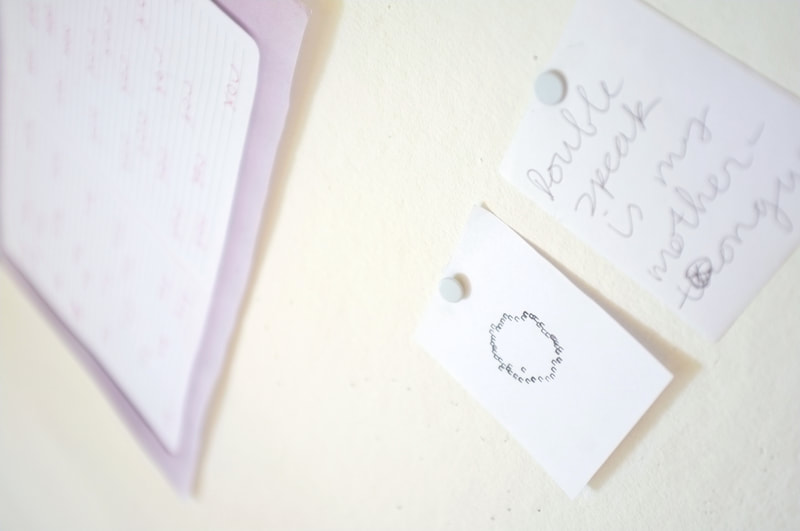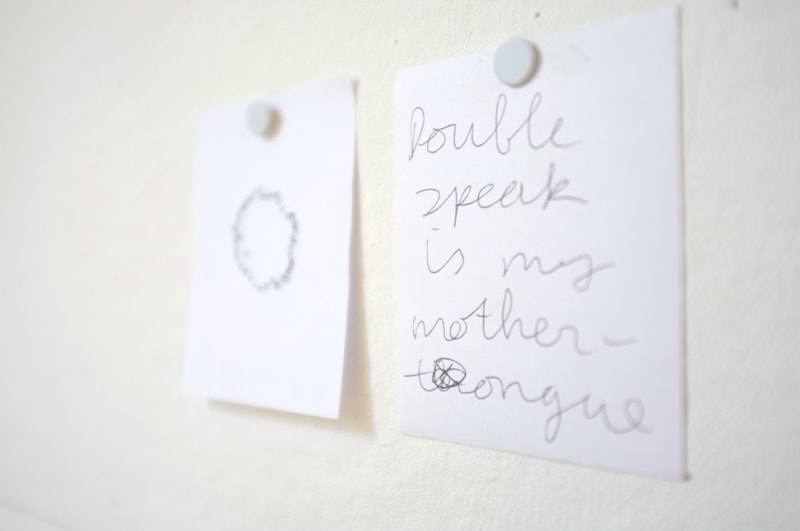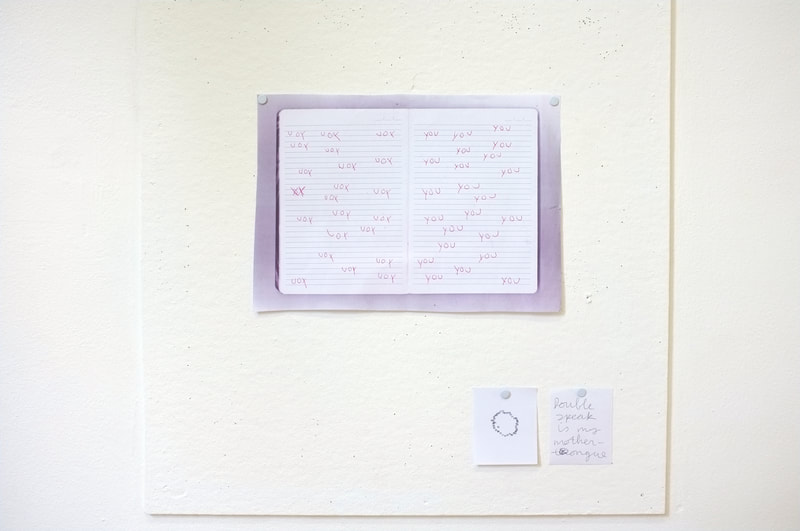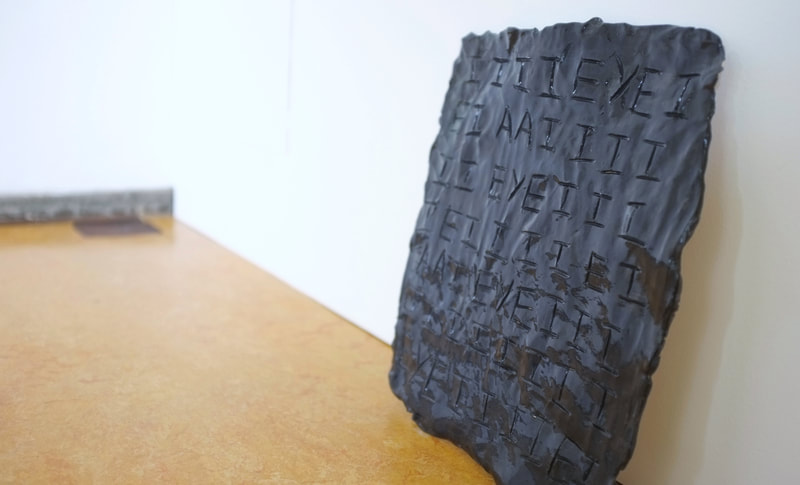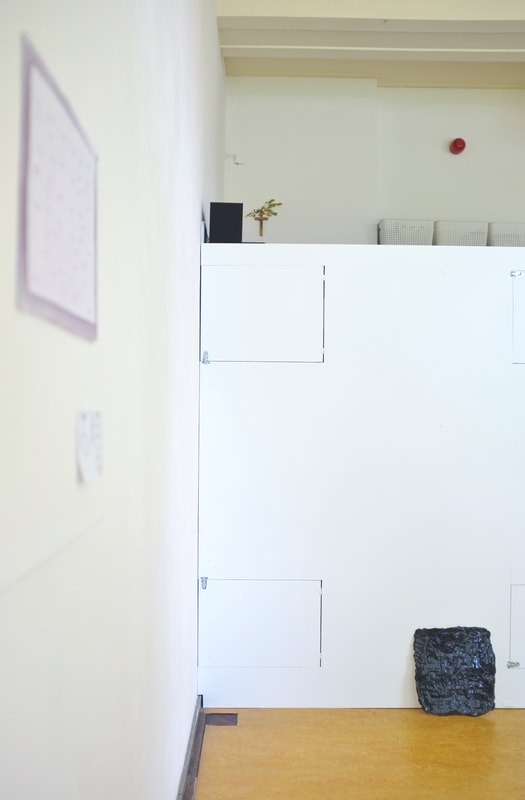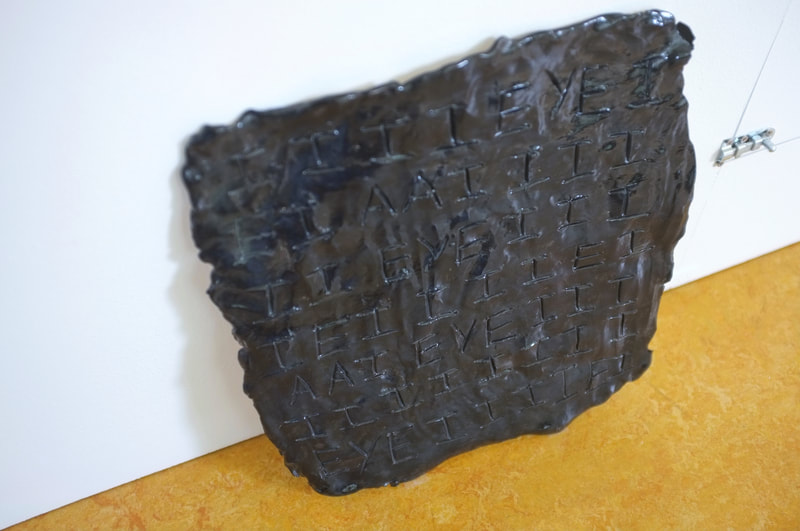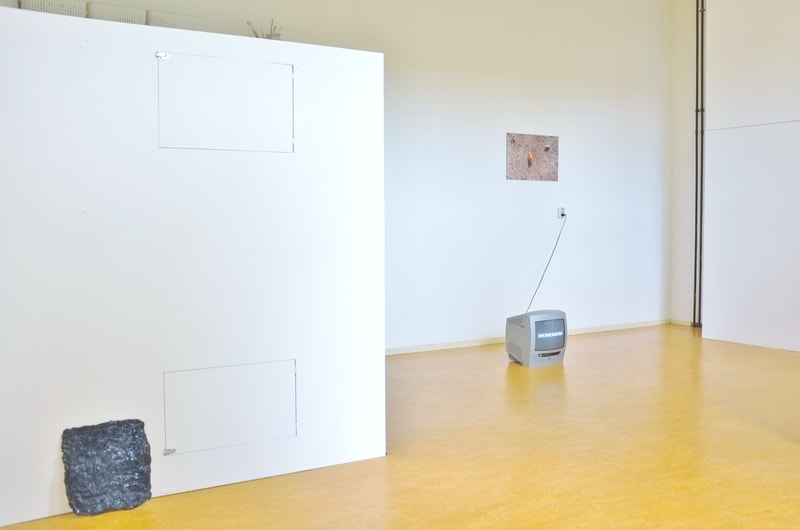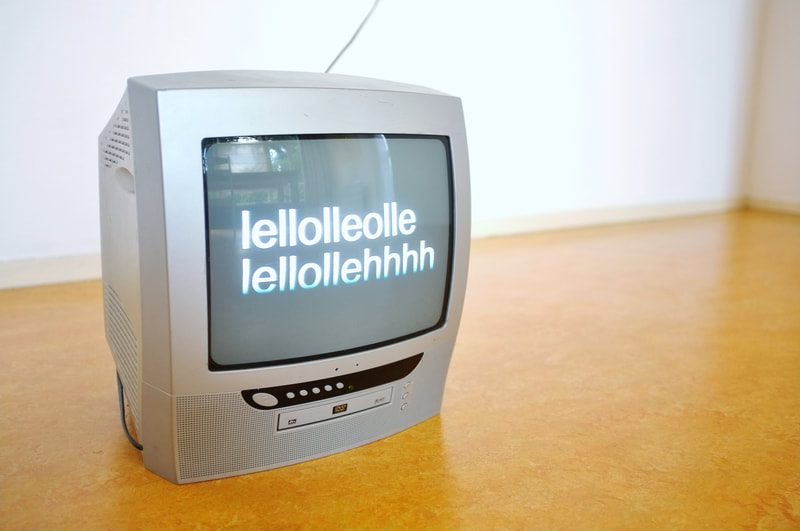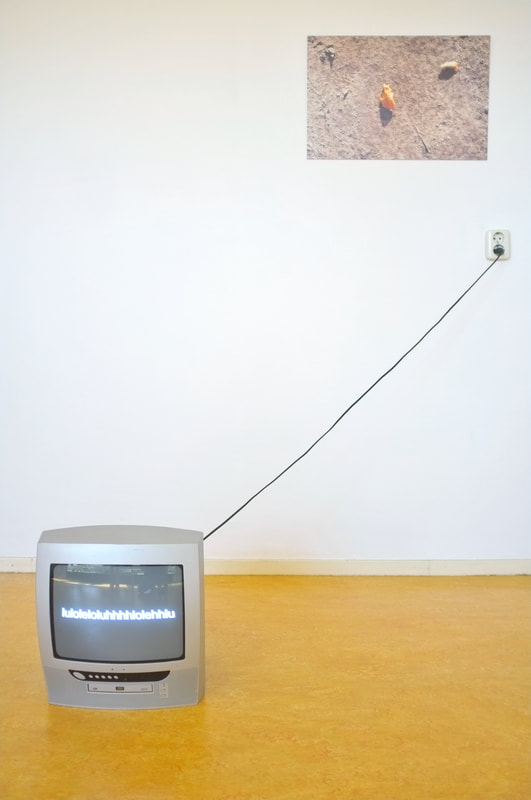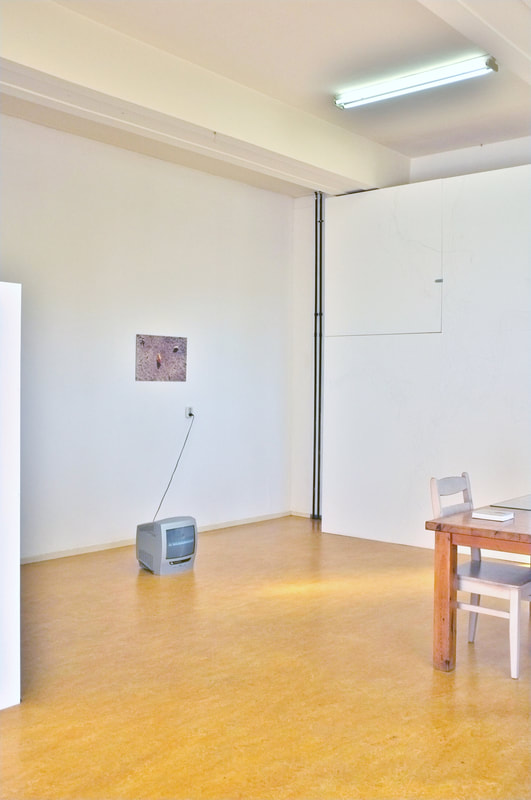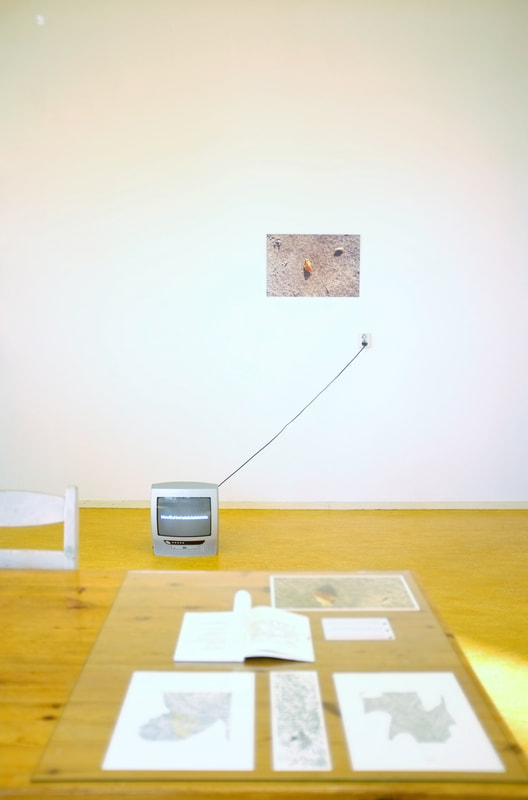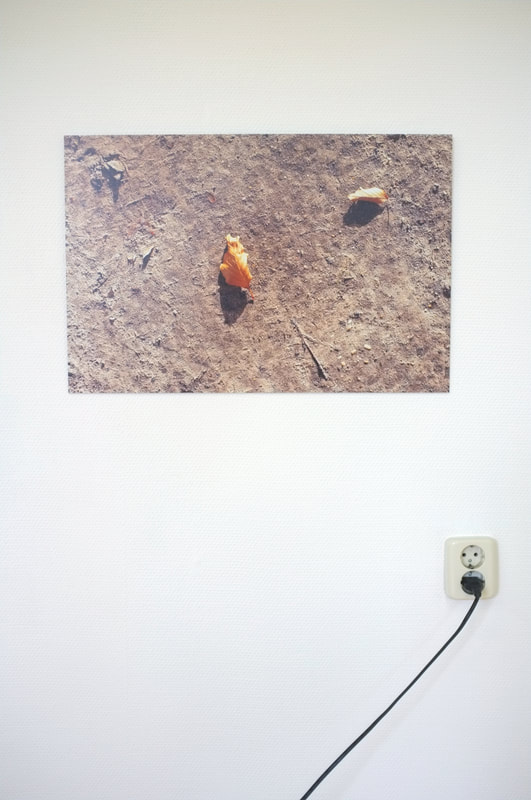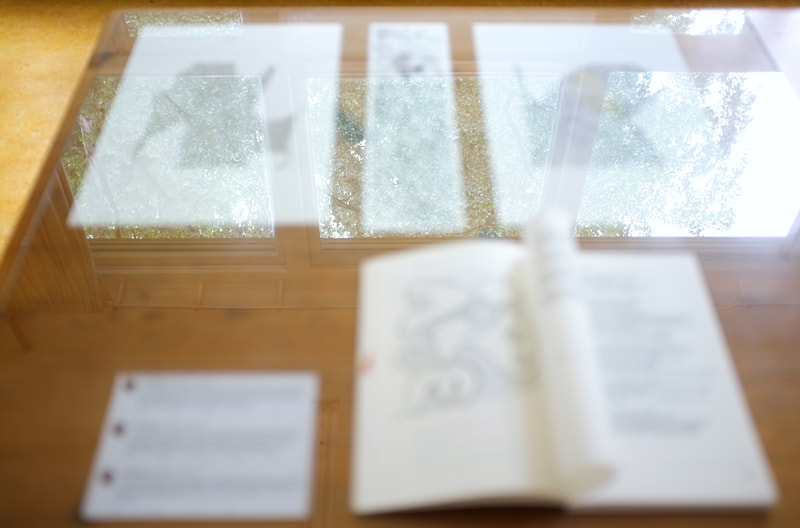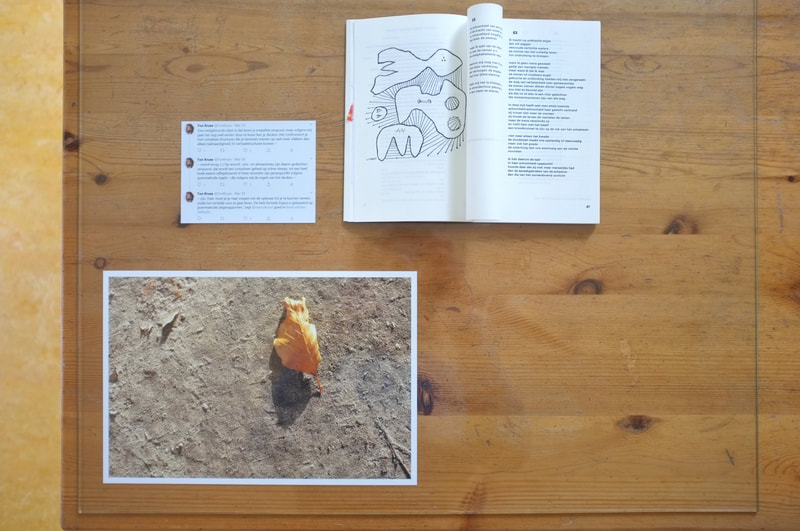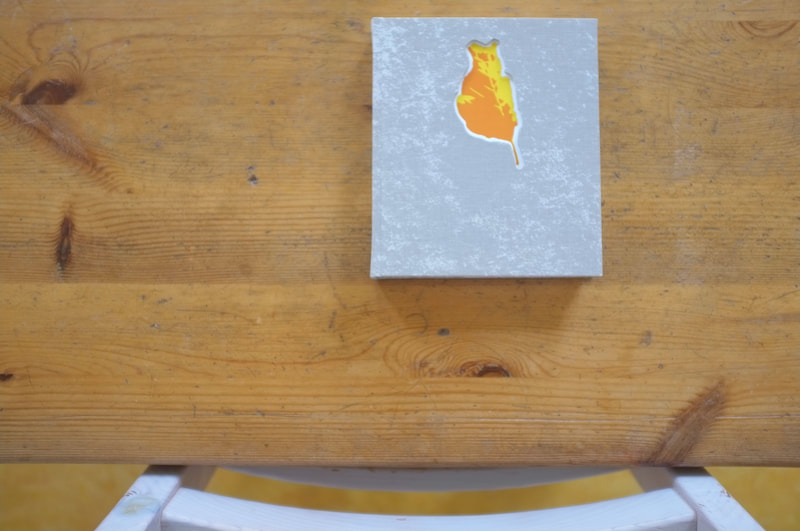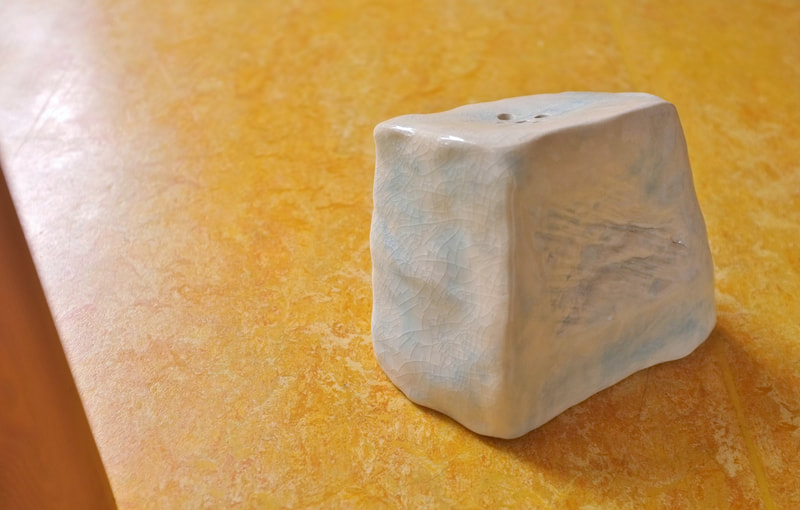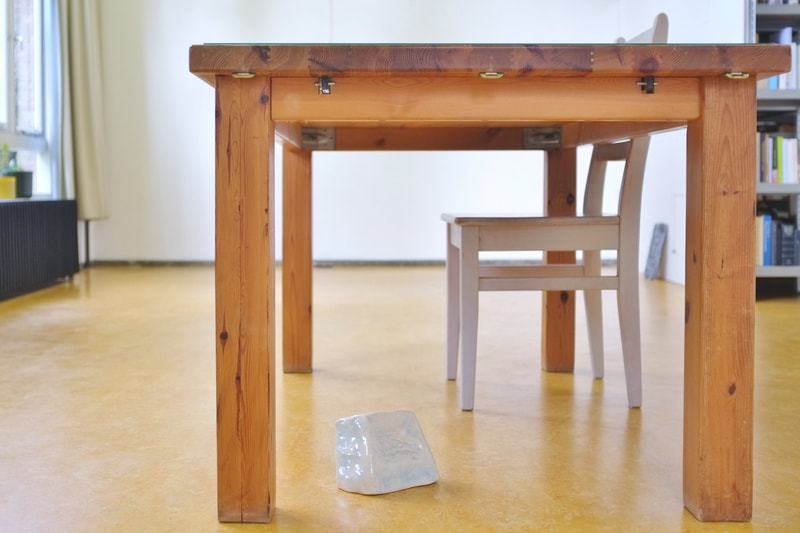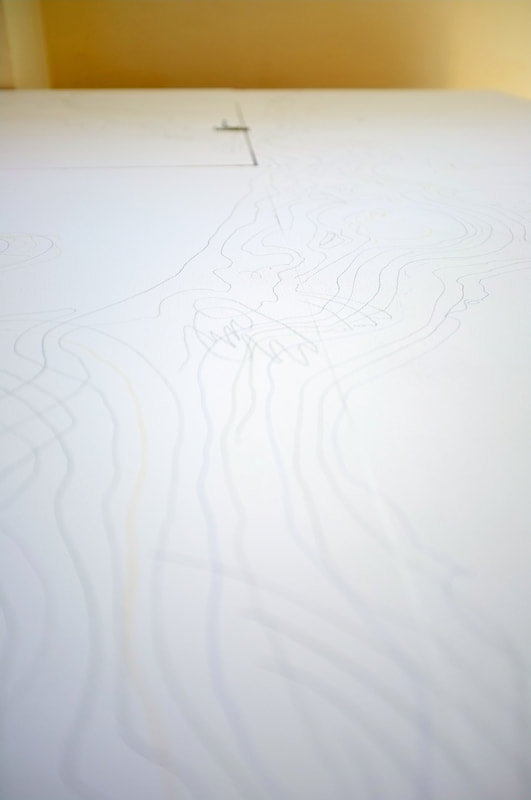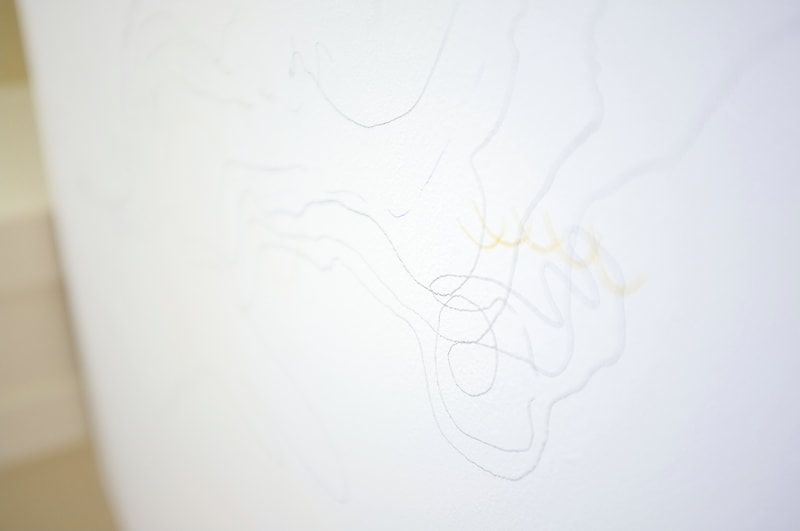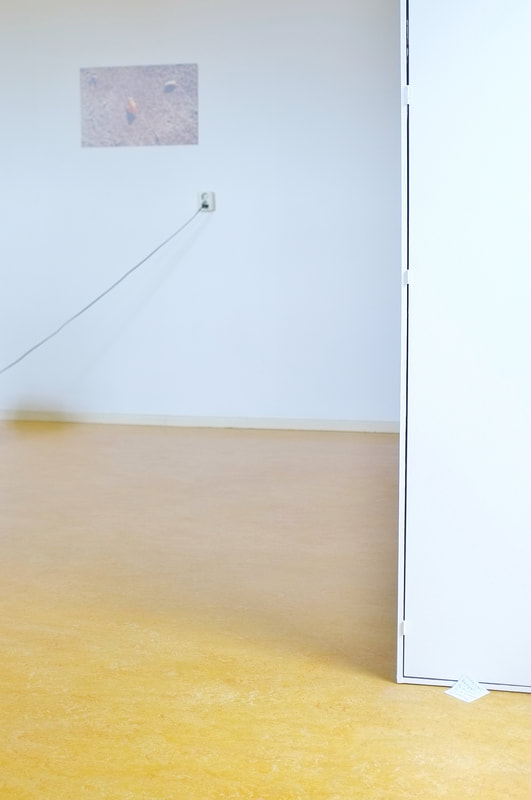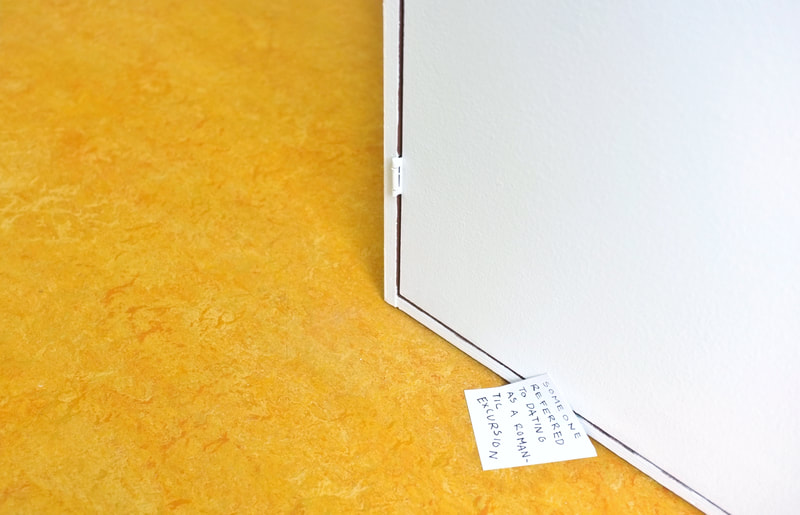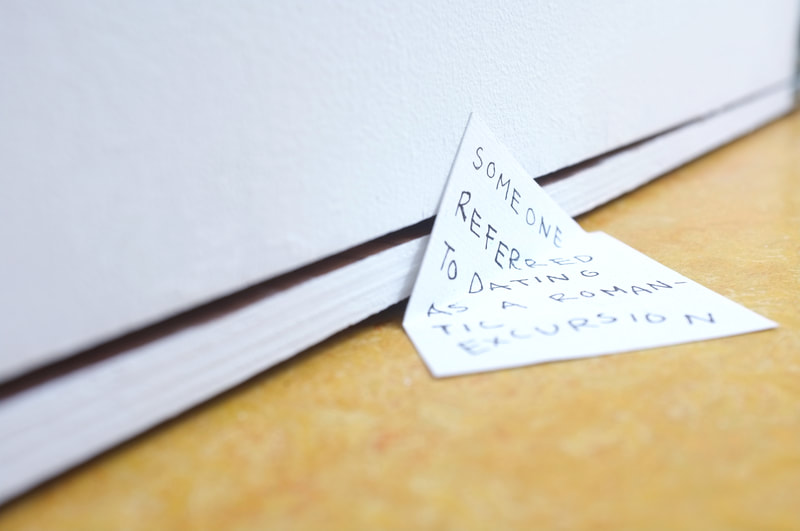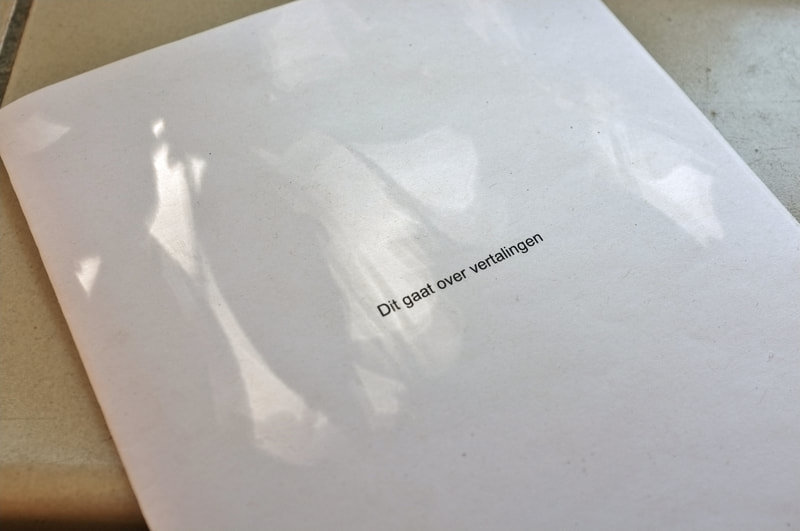R.S.O.L. archive
Room for the Study Of Loneliness : space for contemporary art
make space. do you see?
|
⇱
|
presentatie met werk van / presentation with work by: Ischa Kempka info, Ton Kruse info, Sophie Speklé info
R.S.O.L. 01.06 - 25.07 2020
R.S.O.L. 01.06 - 25.07 2020
| Big File: Structural Wall Drawing, Method for Listening to an Empty Space | |
| File Size: | 4210 kb |
| File Type: | jpg |
De tentoonstelling ´make space. do you see?´ is een onderzoek naar de betekenisruimte die geopend wordt door formuleringen. Deze formuleringen vinden plaats in zowel taal als in beeld. Maar ook daar waar taal geen directe rol speelt, zoals wel gebeurt in beeldend werk, in muziek/geluid of in dans en theater, heeft de talige formulering een centrale plaats in het verwerven van begrip en van kennis. Taal zelf, lijkt als vorm van het denken die tegelijkertijd daarvan niet te onderscheiden is, op een ruimte waarin betekenis gevormd wordt. Taal: teken en syntaxis, vormt een semantische ruimte op een non-dualistische manier. Zoals ook de menselijke geest en het bewustzijn niet los verkrijgbaar is van het menselijk lichaam. De geest heeft een lichamelijke vorm waardoor de geestelijke dimensies van betekenis en kennis geformuleerd worden als manieren van 'zijn' in en van 'de wereld'. De relaties tussen zijn en vorm en tussen vorm en betekenis, zijn relaties die gedefinieerd worden in formuleringen. Het zijn zelf wordt daarmee de open ruimte van het zijnde. In de vorm of de formulering van het zijnde, wordt het zijn be-tekend.
In 'make space. do you see?' wordt de Codex Hortus Conclusus getoond (Ton Kruse, 2019), welke een grond heeft in de open gelaten ruimte van een omsloten tuin en van braakliggend land. Deze open of leeg gelaten ruimte werkt als een onbedoelde ruimte, die ruimte laat - om te verschijnen van wat er is. Hoewel de ruimte fysiek waarneembaar is, is deze niet fysiek te betreden. Voor de verbeelding, het voorstellingsvermogen, vormt deze onmogelijkheid geen belemmering maar een mogelijkheid. De Hortus Conclusus wordt daarmee de mogelijkheid van de mogelijkheid. Niet alleen als onpeilbare grond voor een grondeloze angst, zoals Kierkegaard ooit beschreef in: Het Begrip Angst, maar ook als grond voor de kwalitatieve sprong van het voorstellingsvermogen. De Codex, met daarin een filosofische tekst van Gerard Visser, is een formulering van deze open gelaten ruimte waarin vormen van wat er is kunnen verschijnen.
De betekenisruimte van de taal wordt in het werk van Sophie Speklé belichaamd door de vorm te benaderen als een vattend vat. De vorm om- of be-vat de ruimte waarin betekenis geformuleerd wordt als een structuur. Belichaamde geest gaat voor Speklé over de geestelijke ruimte waarin de ruimte waarin dit bewuste lichaam zich bevindt, be-tekend wordt. De betekenis is teken en kennis (betekennis) die vorm krijgt als een structuur. Tekens vormen woorden, in syntaxis vormen deze zinnen, die op hun beurt weer samen een tekst vormen. Een tekst als structuur waarin betekenisrelaties gevormd worden en een betekenisruimte definiëren. Hoewel de taal geen directe rol speelt in Speklé's werk, maar wel de stem waarmee gesproken kan worden, onderzoekt Speklé de vorm als een betekenisvolle taalstructuur. Structuur die betekenis vat en bevat en die geformuleerd wordt door lichamen die geest bevatten - welke op hun beurt relaties leggen vanuit hun gesitueerdheid, waardoor de individuele situatie in relatie komt te staan tot een grotere structuur. Een grotere structuur, welke we 'wereld' plegen te noemen.
Bij Ischa Kempka vormen taal en teken de basis van haar onderzoek. Het teken dat betekend, dat door aan te wijzen relaties legt tussen spreker en (het) besprokene. Zowel in letterlijke, directe zin, als in overdrachtelijke zin. Want zo gauw de concrete spreker als auteur uit beeld verdwijnt, 'spreekt' het teken, ofwel de formulering, nog altijd over dat wat het aanwijst. Ieder teken be-tekend. Wat betekend wordt is iets wat autonoom in relatie staat tot wat in het teken 'gezegd' of bedoeld is. Het teken is zowel letterteken en woord, alsook: beeld. Want ook 'beelden' be-tekenen. De geheimzinnige verstrengeling tussen taal en denken komt juist in beeldend werk bij Kempka nadrukkelijk aan de orde. Omdat het woord als beeld verschijnt, en niet alleen maar 'beeld' oproept of vormt, in de betekenisruimte van de geest. Het teken waarmee we ons voorstellen wat er is bedoeld, legt relaties tussen wat er is en wat er niet is. De ongrijpbare oorsprong van betekenis en het betekende is waar Kempka naar zoekt.
/
The exhibition 'make space. do you see?' is an investigation into the space for meaning that is opened by formulations. These formulations take place in both language and image. But even where language does not play a direct role, as often seems to be the case in visual work, in music / sound or in dance and theater, the linguistic formulation still has a central place in the formation of understanding and knowledge. Language itself, as a form of thought that cannot be distinguished from thought itself, resembles a space in which meaning is being formed. Language: sign and syntax, forms a semantic space in a non-dualistic way. Just as the human mind and consciousness cannot be obtained separately from the human body. The mind has a physical form through which the spiritual dimensions of meaning and knowledge are formulated as ways of 'being' in and of 'the world'. The relationships between being and form and between form and meaning are relationships that are defined in formulations. Being itself therefore becomes the open space of ways of that what is. In the form or the formulation of that which is, being is meant.
In 'make space. do you see?' the Codex Hortus Conclusus is shown (Ton Kruse 2019), which has a ground in the open space of an enclosed garden and of fallow land. This open or left empty space works as an unintentional space, that leaves room - for the appearance of that what is. Although the space is physically perceptible, it is not physically accessible. For the imagination this impossibility does not constitute an obstacle but rather a possibility. The Hortus Conclusus therefore can become the possibility of possibility. Not just as an unfathomable ground for a groundless fear, as Kierkegaard once described in: The concept of Anxiety, but foremost as a ground for a qualitative leap of imagination. The Codex, containing a philosophical text by Gerard Visser, is a formulation of this open space in which forms of ways of what is there can appear.
The space for meaning of language is embodied in the work of Sophie Speklé by approaching form as a containing vessel. The form comprises a space in which signification is formulated as a structure. For Speklé, embodied spirit is about the spiritual space in which the space in which this conscious body is located, is signified. Meaning is both sign and knowledge that take shape as a structure. Signs form words, in turn these form in syntax sentences, which in turn form a text. A text as a structure in which meaningful relationships are being shaped. Although language does not play a direct role in Speklé's work, but the voice by which one speaks does, form is examined as a meaningful linguistic structure. Structure that captures and contains meaning and that is formulated by bodies that contain spirit. Bodies that are vessels, that in turn establish relationships based on their situation, whereby the individual situation becomes related to a larger structure. A larger structure, which we tend to call 'world'.
For Ischa Kempka language and sign form the basis of her research. The sign that signifies, and which - by designating - shapes relations between the speaker and case being discussed. Both in a literal, direct sense and in a transferable sense. Because as soon as the concrete speaker disappears from view as author, the sign or the formulation, still 'talks' autonomously about what it is pointing to. Every sign signifies. What is meant is autonomously related to what is intended in the sign. The sign is both letter-sign and word, as well as: image. Because images also 'mean'. They point to or point out what is intended. The mysterious entanglement between language and thought is dealt with in 'visual' work. Here the word appears as an image itself, and not only evokes or forms an 'image' in the space for meaning of the mind. The sign by which we imagine what is meant, establishes relationships between what is and what is not. The elusive origin of meaning and what is meant is what Kempka is looking for.
In 'make space. do you see?' wordt de Codex Hortus Conclusus getoond (Ton Kruse, 2019), welke een grond heeft in de open gelaten ruimte van een omsloten tuin en van braakliggend land. Deze open of leeg gelaten ruimte werkt als een onbedoelde ruimte, die ruimte laat - om te verschijnen van wat er is. Hoewel de ruimte fysiek waarneembaar is, is deze niet fysiek te betreden. Voor de verbeelding, het voorstellingsvermogen, vormt deze onmogelijkheid geen belemmering maar een mogelijkheid. De Hortus Conclusus wordt daarmee de mogelijkheid van de mogelijkheid. Niet alleen als onpeilbare grond voor een grondeloze angst, zoals Kierkegaard ooit beschreef in: Het Begrip Angst, maar ook als grond voor de kwalitatieve sprong van het voorstellingsvermogen. De Codex, met daarin een filosofische tekst van Gerard Visser, is een formulering van deze open gelaten ruimte waarin vormen van wat er is kunnen verschijnen.
De betekenisruimte van de taal wordt in het werk van Sophie Speklé belichaamd door de vorm te benaderen als een vattend vat. De vorm om- of be-vat de ruimte waarin betekenis geformuleerd wordt als een structuur. Belichaamde geest gaat voor Speklé over de geestelijke ruimte waarin de ruimte waarin dit bewuste lichaam zich bevindt, be-tekend wordt. De betekenis is teken en kennis (betekennis) die vorm krijgt als een structuur. Tekens vormen woorden, in syntaxis vormen deze zinnen, die op hun beurt weer samen een tekst vormen. Een tekst als structuur waarin betekenisrelaties gevormd worden en een betekenisruimte definiëren. Hoewel de taal geen directe rol speelt in Speklé's werk, maar wel de stem waarmee gesproken kan worden, onderzoekt Speklé de vorm als een betekenisvolle taalstructuur. Structuur die betekenis vat en bevat en die geformuleerd wordt door lichamen die geest bevatten - welke op hun beurt relaties leggen vanuit hun gesitueerdheid, waardoor de individuele situatie in relatie komt te staan tot een grotere structuur. Een grotere structuur, welke we 'wereld' plegen te noemen.
Bij Ischa Kempka vormen taal en teken de basis van haar onderzoek. Het teken dat betekend, dat door aan te wijzen relaties legt tussen spreker en (het) besprokene. Zowel in letterlijke, directe zin, als in overdrachtelijke zin. Want zo gauw de concrete spreker als auteur uit beeld verdwijnt, 'spreekt' het teken, ofwel de formulering, nog altijd over dat wat het aanwijst. Ieder teken be-tekend. Wat betekend wordt is iets wat autonoom in relatie staat tot wat in het teken 'gezegd' of bedoeld is. Het teken is zowel letterteken en woord, alsook: beeld. Want ook 'beelden' be-tekenen. De geheimzinnige verstrengeling tussen taal en denken komt juist in beeldend werk bij Kempka nadrukkelijk aan de orde. Omdat het woord als beeld verschijnt, en niet alleen maar 'beeld' oproept of vormt, in de betekenisruimte van de geest. Het teken waarmee we ons voorstellen wat er is bedoeld, legt relaties tussen wat er is en wat er niet is. De ongrijpbare oorsprong van betekenis en het betekende is waar Kempka naar zoekt.
/
The exhibition 'make space. do you see?' is an investigation into the space for meaning that is opened by formulations. These formulations take place in both language and image. But even where language does not play a direct role, as often seems to be the case in visual work, in music / sound or in dance and theater, the linguistic formulation still has a central place in the formation of understanding and knowledge. Language itself, as a form of thought that cannot be distinguished from thought itself, resembles a space in which meaning is being formed. Language: sign and syntax, forms a semantic space in a non-dualistic way. Just as the human mind and consciousness cannot be obtained separately from the human body. The mind has a physical form through which the spiritual dimensions of meaning and knowledge are formulated as ways of 'being' in and of 'the world'. The relationships between being and form and between form and meaning are relationships that are defined in formulations. Being itself therefore becomes the open space of ways of that what is. In the form or the formulation of that which is, being is meant.
In 'make space. do you see?' the Codex Hortus Conclusus is shown (Ton Kruse 2019), which has a ground in the open space of an enclosed garden and of fallow land. This open or left empty space works as an unintentional space, that leaves room - for the appearance of that what is. Although the space is physically perceptible, it is not physically accessible. For the imagination this impossibility does not constitute an obstacle but rather a possibility. The Hortus Conclusus therefore can become the possibility of possibility. Not just as an unfathomable ground for a groundless fear, as Kierkegaard once described in: The concept of Anxiety, but foremost as a ground for a qualitative leap of imagination. The Codex, containing a philosophical text by Gerard Visser, is a formulation of this open space in which forms of ways of what is there can appear.
The space for meaning of language is embodied in the work of Sophie Speklé by approaching form as a containing vessel. The form comprises a space in which signification is formulated as a structure. For Speklé, embodied spirit is about the spiritual space in which the space in which this conscious body is located, is signified. Meaning is both sign and knowledge that take shape as a structure. Signs form words, in turn these form in syntax sentences, which in turn form a text. A text as a structure in which meaningful relationships are being shaped. Although language does not play a direct role in Speklé's work, but the voice by which one speaks does, form is examined as a meaningful linguistic structure. Structure that captures and contains meaning and that is formulated by bodies that contain spirit. Bodies that are vessels, that in turn establish relationships based on their situation, whereby the individual situation becomes related to a larger structure. A larger structure, which we tend to call 'world'.
For Ischa Kempka language and sign form the basis of her research. The sign that signifies, and which - by designating - shapes relations between the speaker and case being discussed. Both in a literal, direct sense and in a transferable sense. Because as soon as the concrete speaker disappears from view as author, the sign or the formulation, still 'talks' autonomously about what it is pointing to. Every sign signifies. What is meant is autonomously related to what is intended in the sign. The sign is both letter-sign and word, as well as: image. Because images also 'mean'. They point to or point out what is intended. The mysterious entanglement between language and thought is dealt with in 'visual' work. Here the word appears as an image itself, and not only evokes or forms an 'image' in the space for meaning of the mind. The sign by which we imagine what is meant, establishes relationships between what is and what is not. The elusive origin of meaning and what is meant is what Kempka is looking for.
